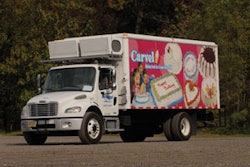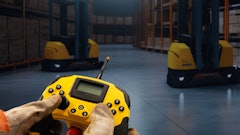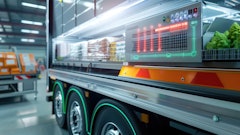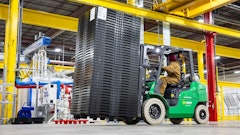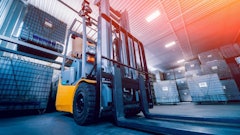
Getting out of the office has its benefits, particularly when it involves attending a trade show that helps spark new editorial ideas, affords some catching up with colleagues, and allows me to take a 35,000-foot view from above (literally and figuratively) to think about supply chains—how technology is helping meet demands brought on by e-commerce, who’s doing what in the sustainability space, why supply chain mapping and product lifecycle assessments are continuing to get a lot of play—and what these big trends mean for the industry.
For food logistics executives, the implications are many. For starters, the sector is highly fragmented. On one end, there are a handful of very large food producers and distributors who operate complex global supply chains with advanced technology and sophisticated transportation networks. On the opposite end, there are plenty of smaller companies, genuine mom-and-pops, whose reach may extend locally or regionally and whose operations are more manual that automated.
Yet, the entire food sector and all the various companies that it encompasses is under intense pressure to get up to speed on several fronts. Tracking and tracing requirements brought on by the federal Food Safety Modernization Act (FSMA); growing volumes of U.S. food imports and exports; ongoing consolidation in the industry; and the undisputable fact that “whoever has the best supply chain wins,” portends that the food sector has truly entered the 21st century.
As I write this column, it has just been announced that an eighteenth person has died from contaminated cantaloupes. Admittedly, there are underlying production problems that need to be addressed, but it is fair to say that in general, food supply chains are seriously lacking when it comes to visibility, tracking and tracing, and therefore safety and security, when compared to many other sectors. And we’re talking about food, not some discretionary commodity. This affects us all and it shouldn’t happen with the tools—technology and otherwise—at our disposable.
Food production alone is confronting its own challenges, and we’ll address some of them in future issues, like sourcing, managing suppliers, and the growing implications of water footprinting.
Our biggest focus, of course, will remain on the transportation and logistics side of the supply chain. In this issue, we look at warehouses to see how technology is helping operators boost productivity inside the four walls. There’s also coverage on product recalls and reverse logistics as well as the freight rail sector, whose commitment to improving its once dismal service has made it a highly attractive transportation mode for time- and temperature-sensitive cargo. This month also includes product updates on lift trucks, reefer containers and cloud computing.
In fact, cloud computing is a very hot topic that we will begin to cover more in-depth in the coming months. It provides affordability, scalability, and collaboration to large and small companies, making it one of the most important tools for the food sector in the 21st century.
Enjoy the read.








